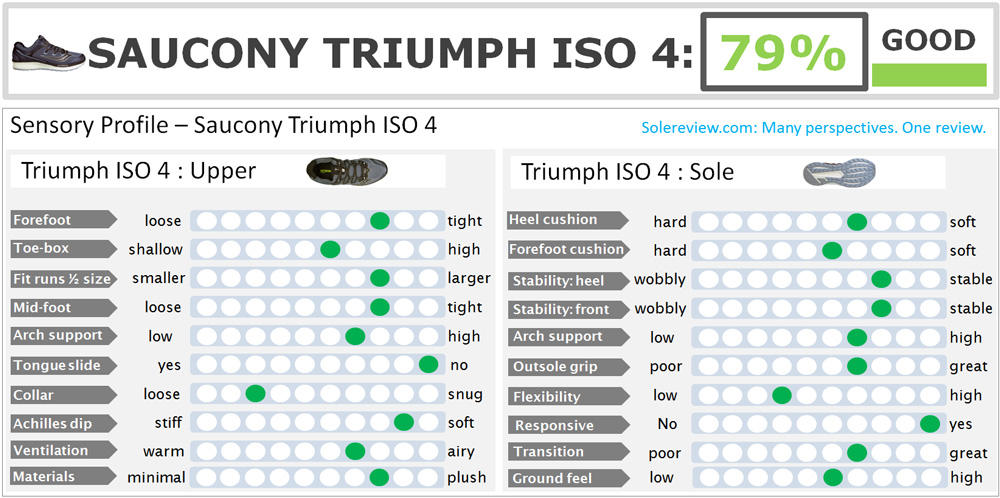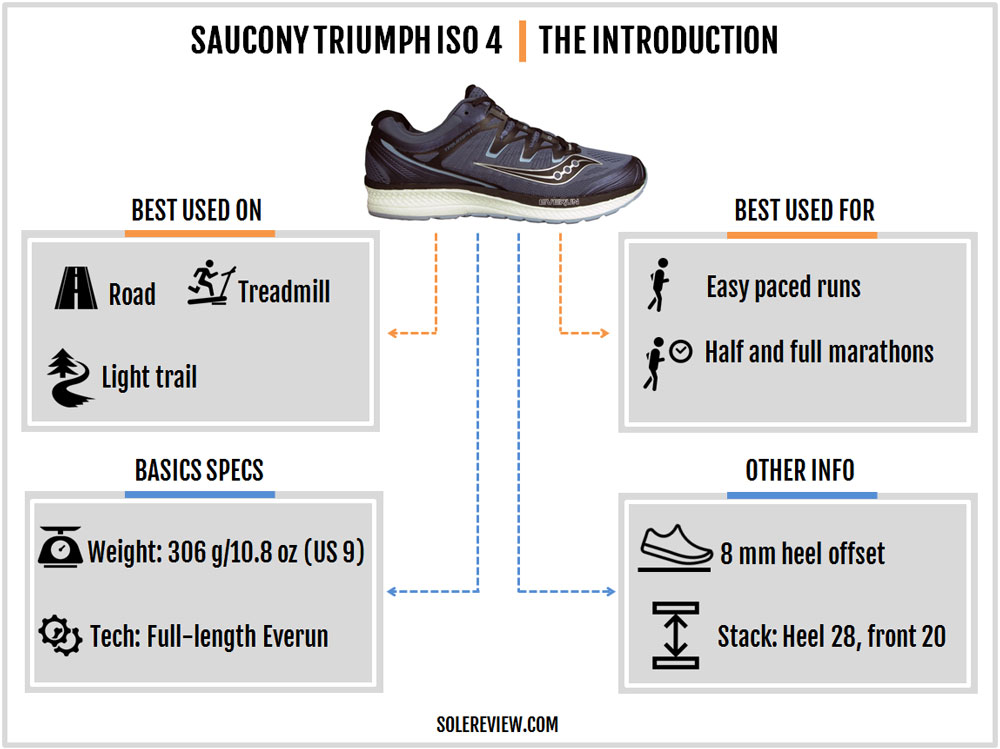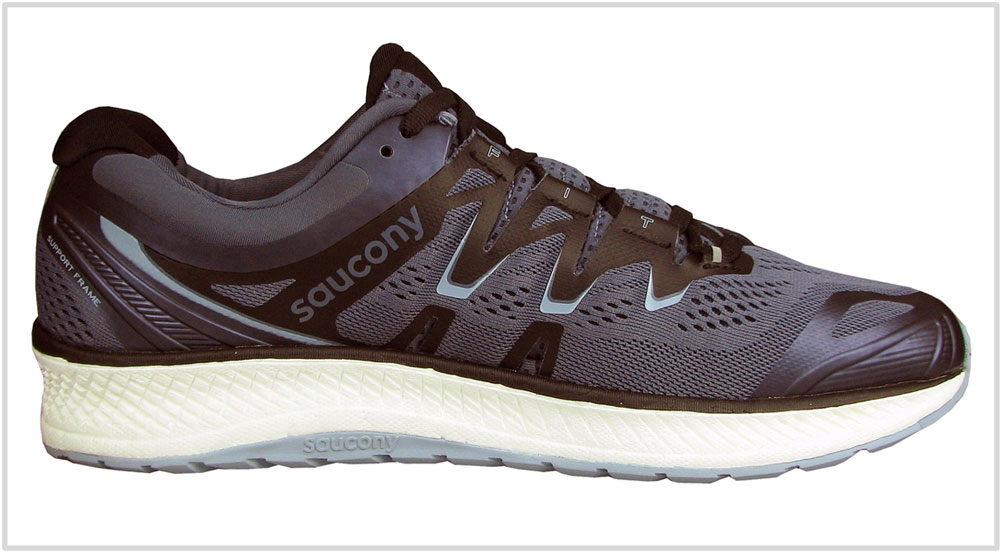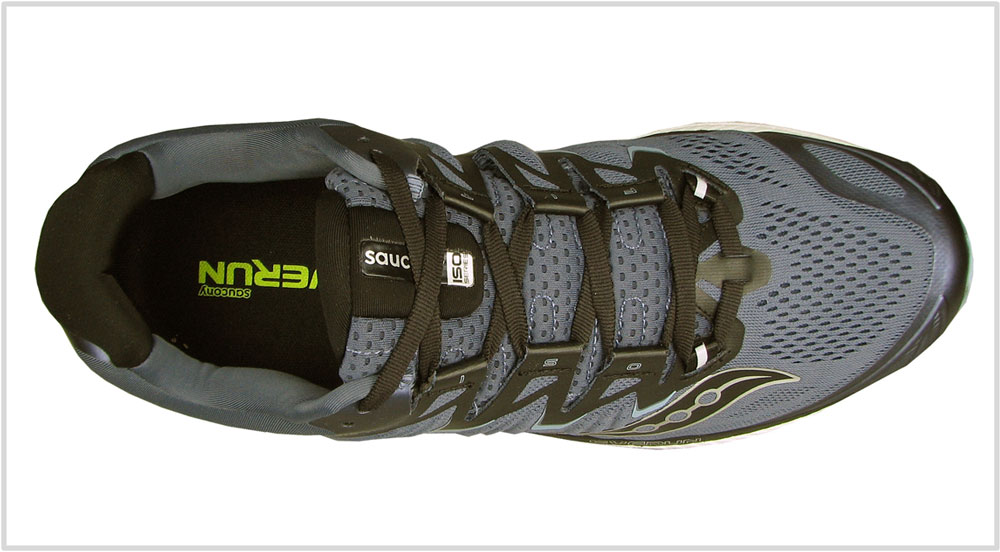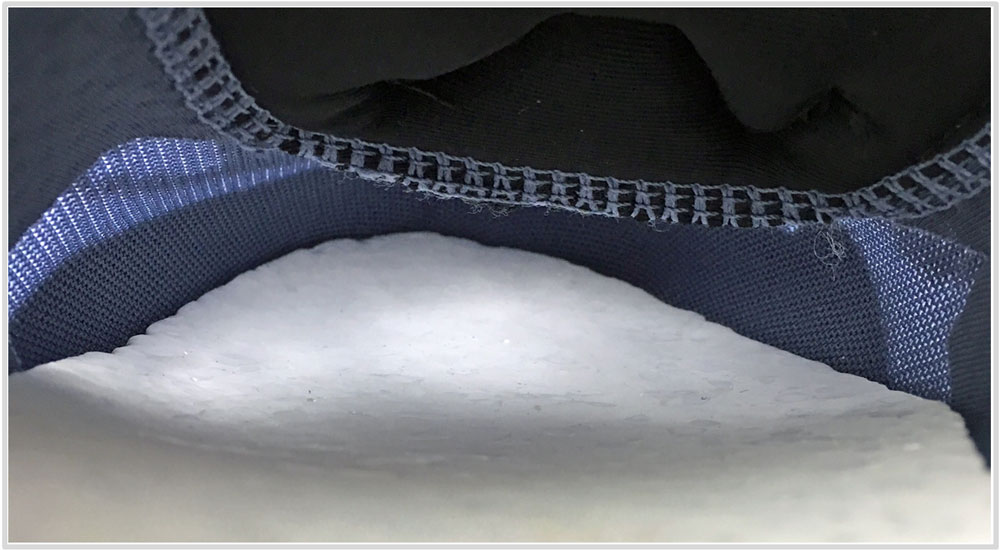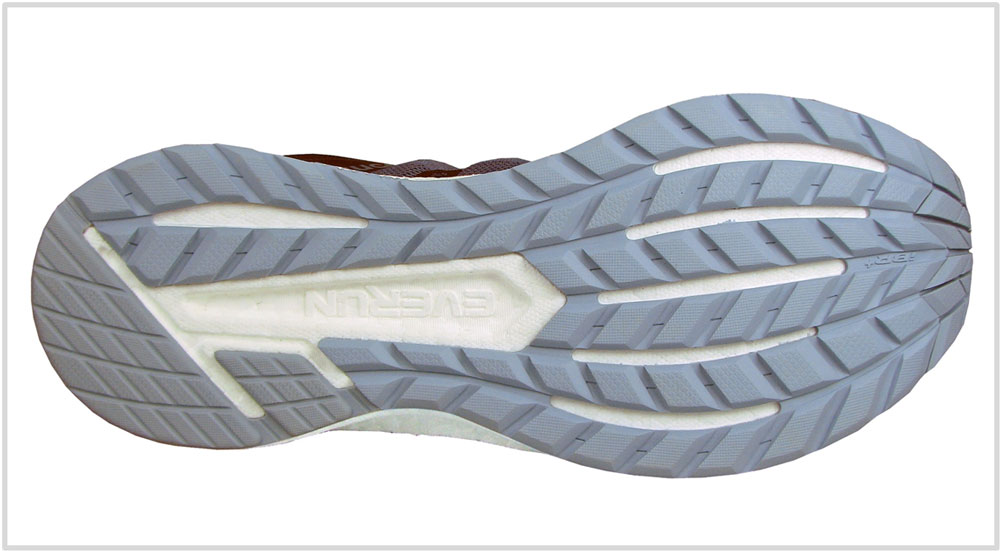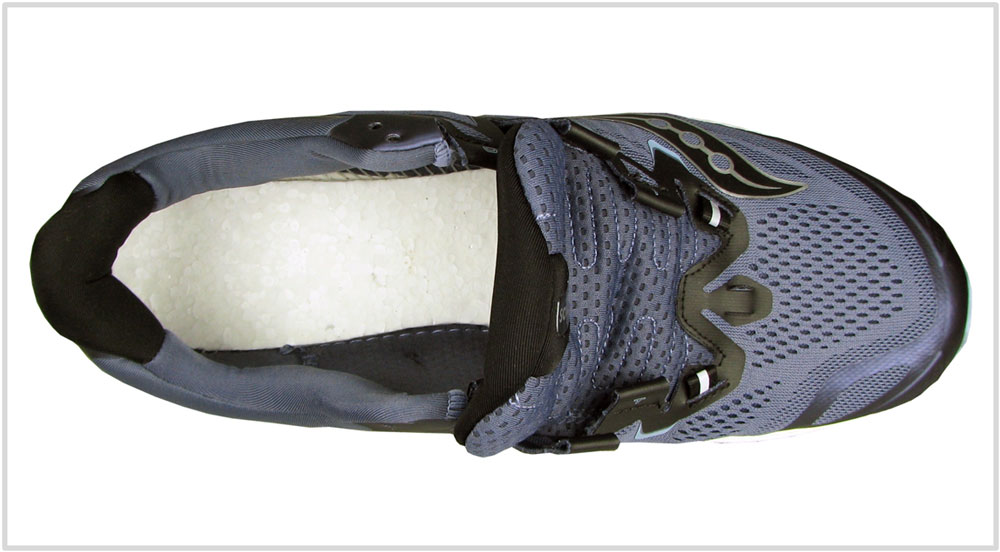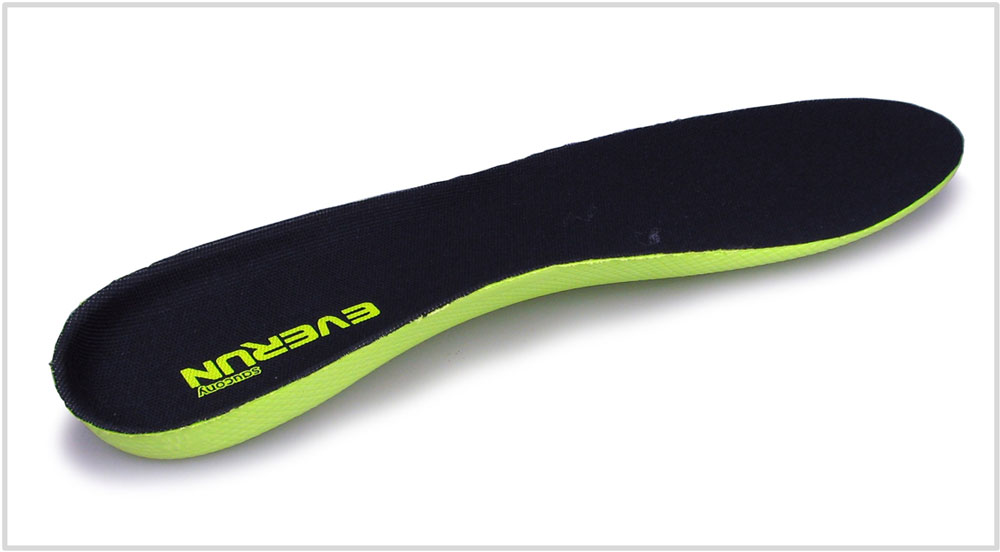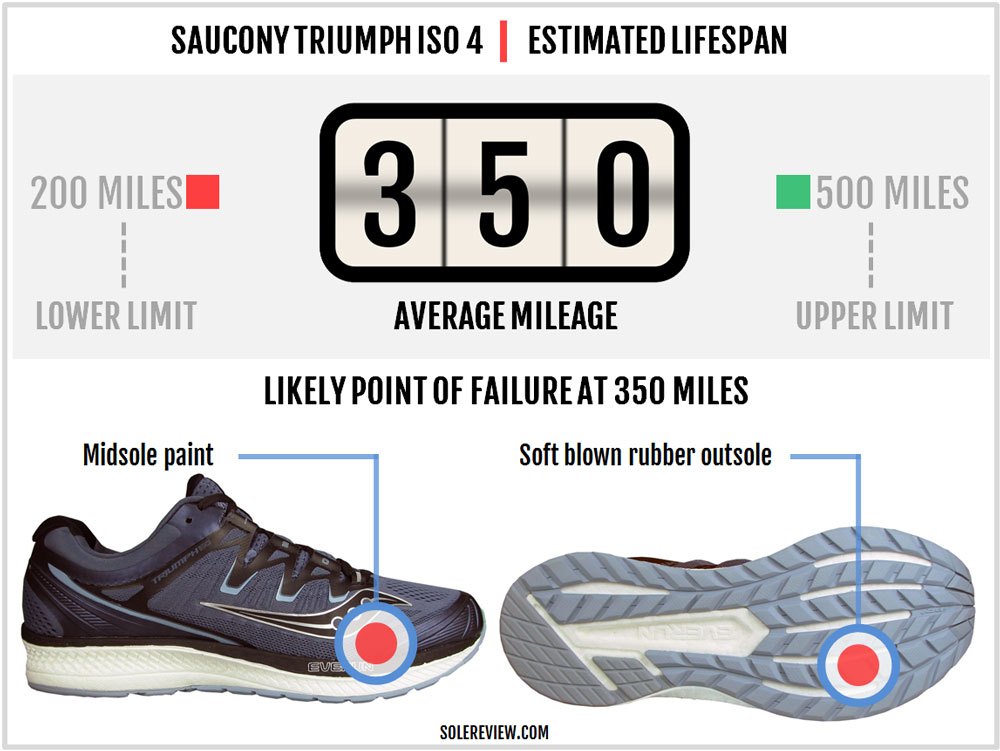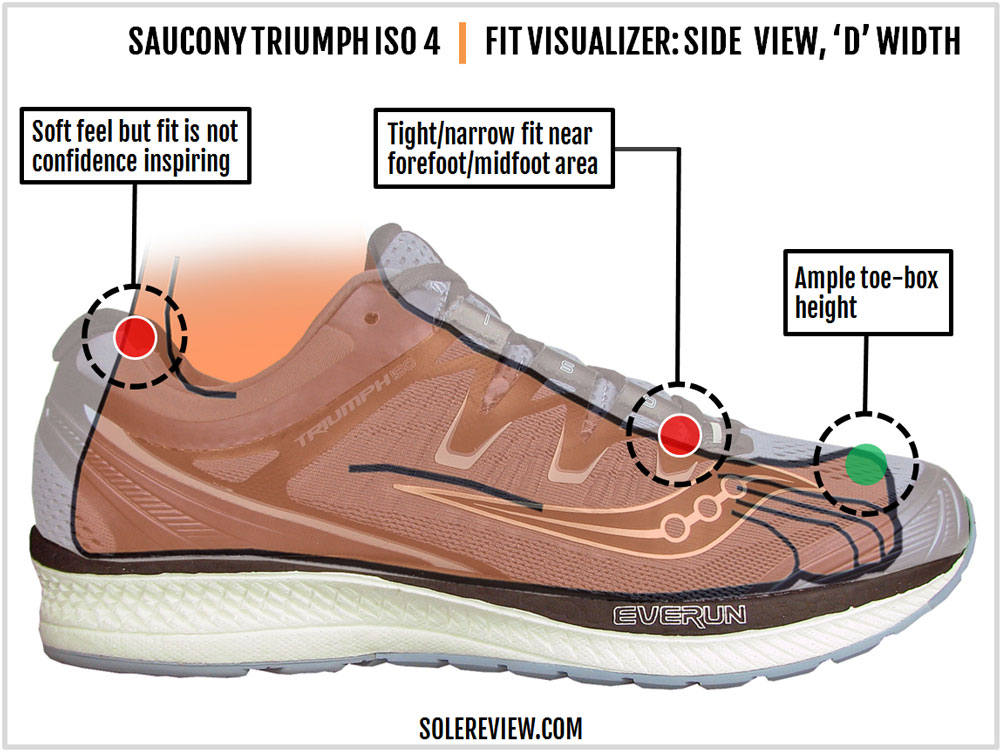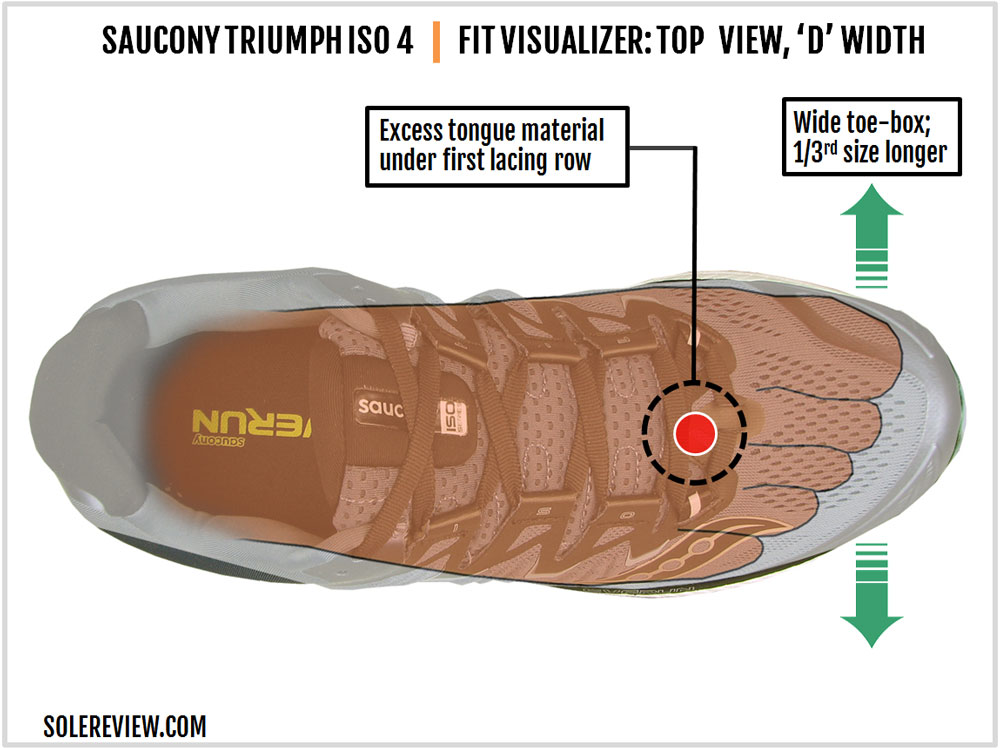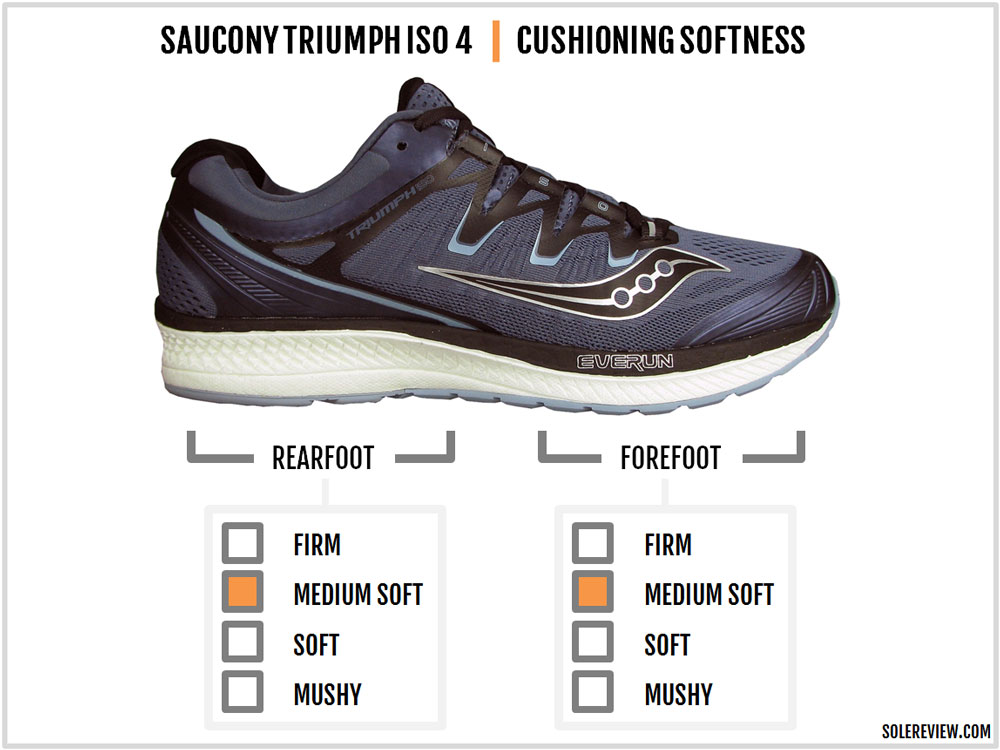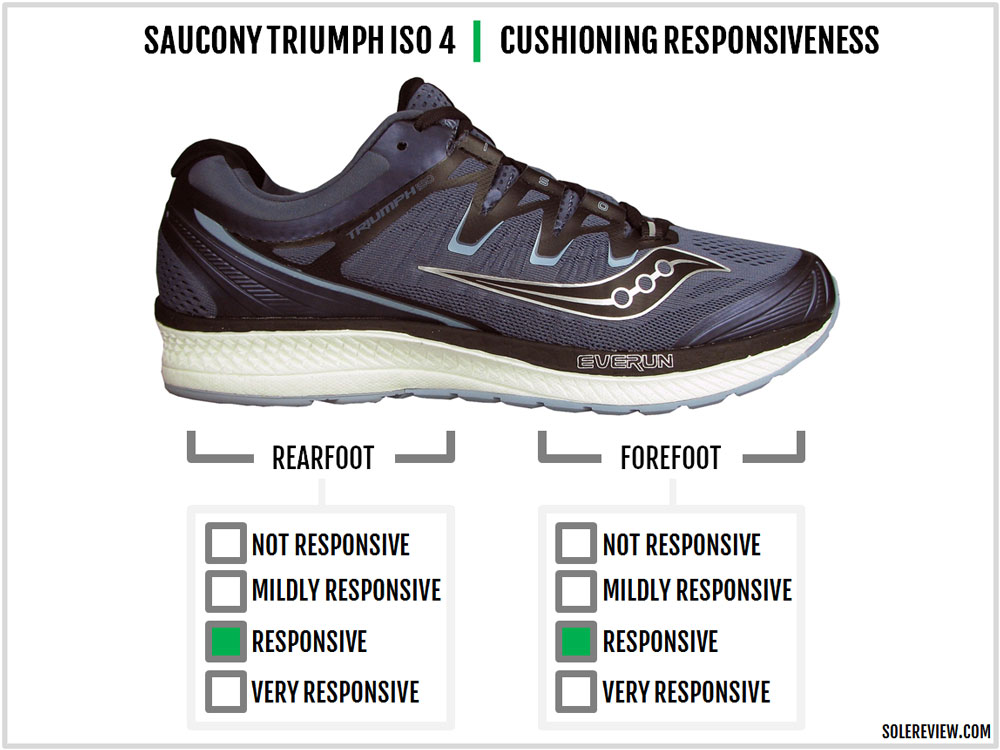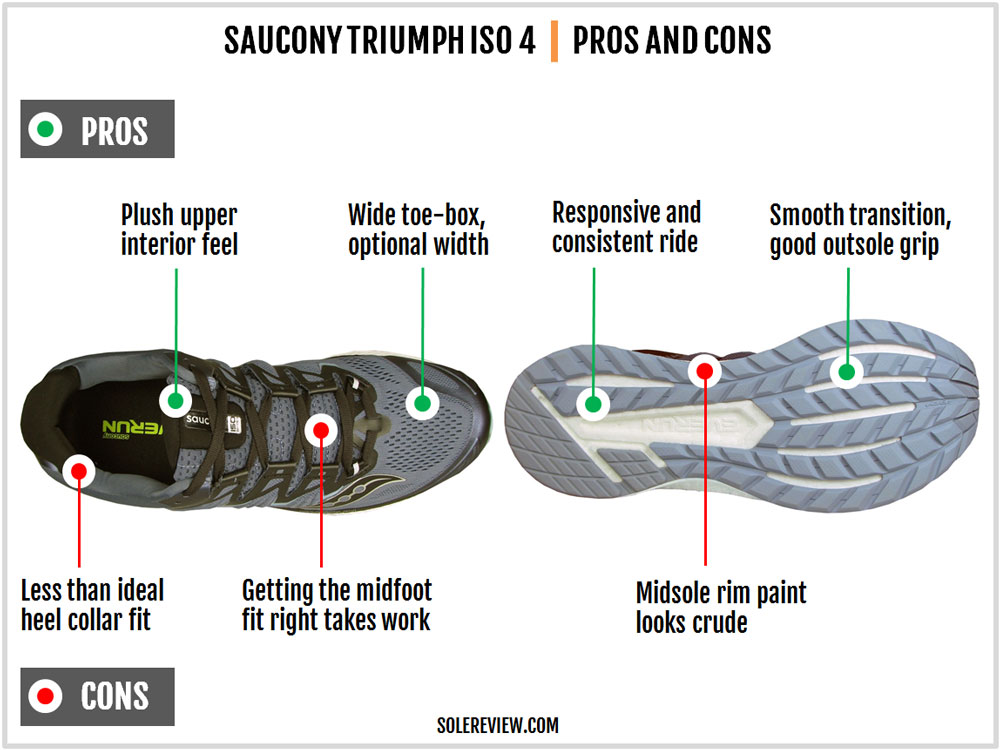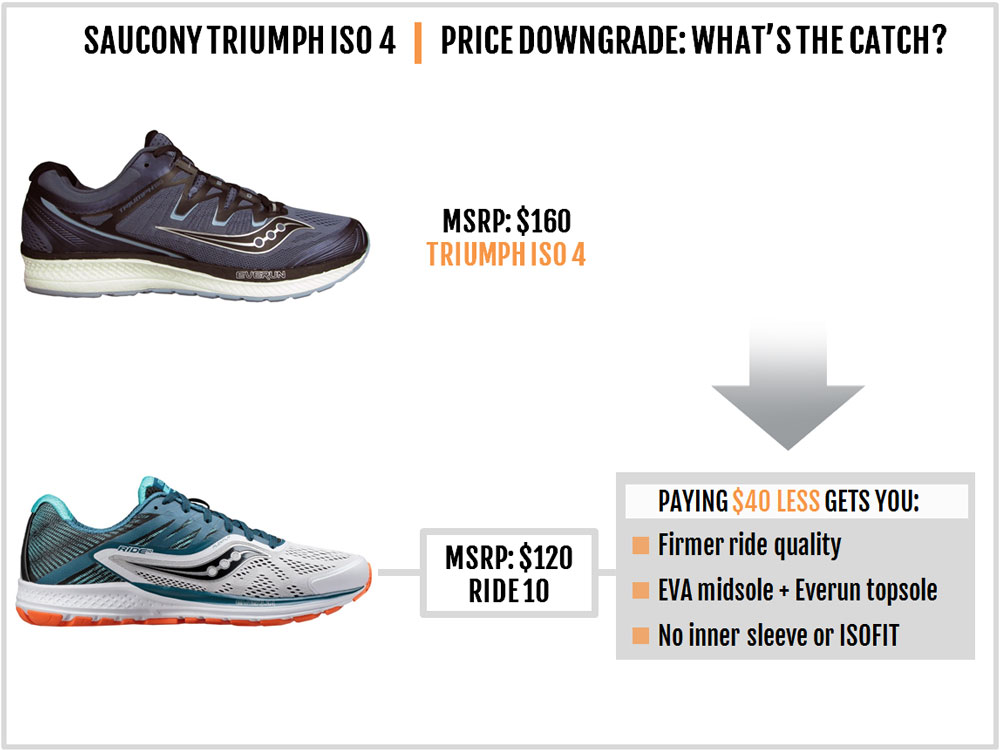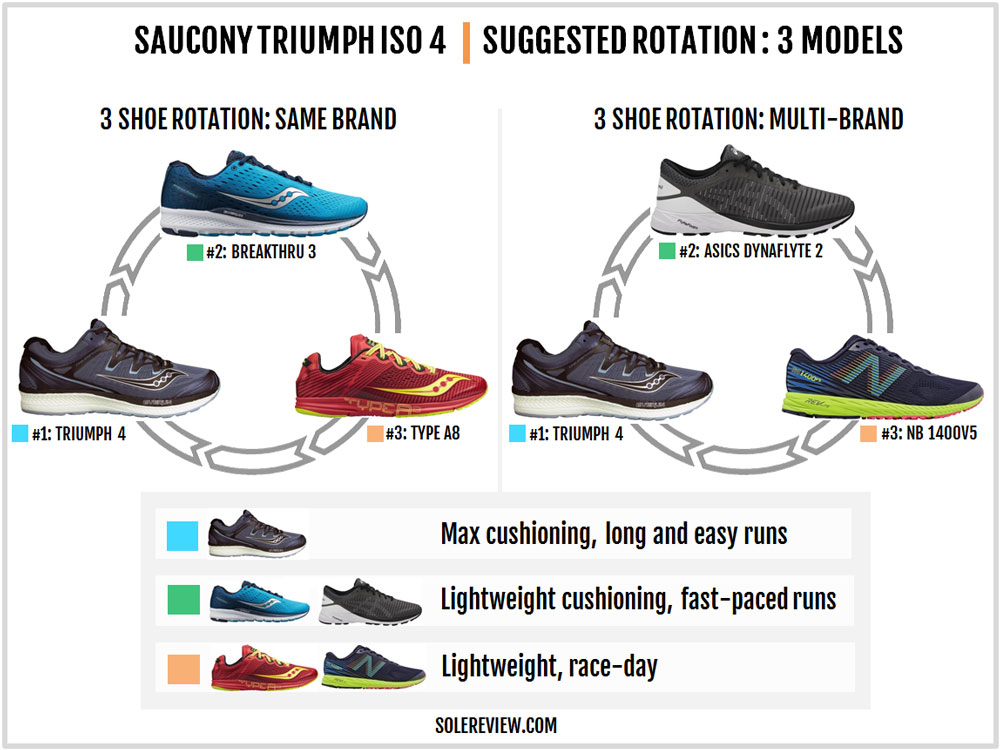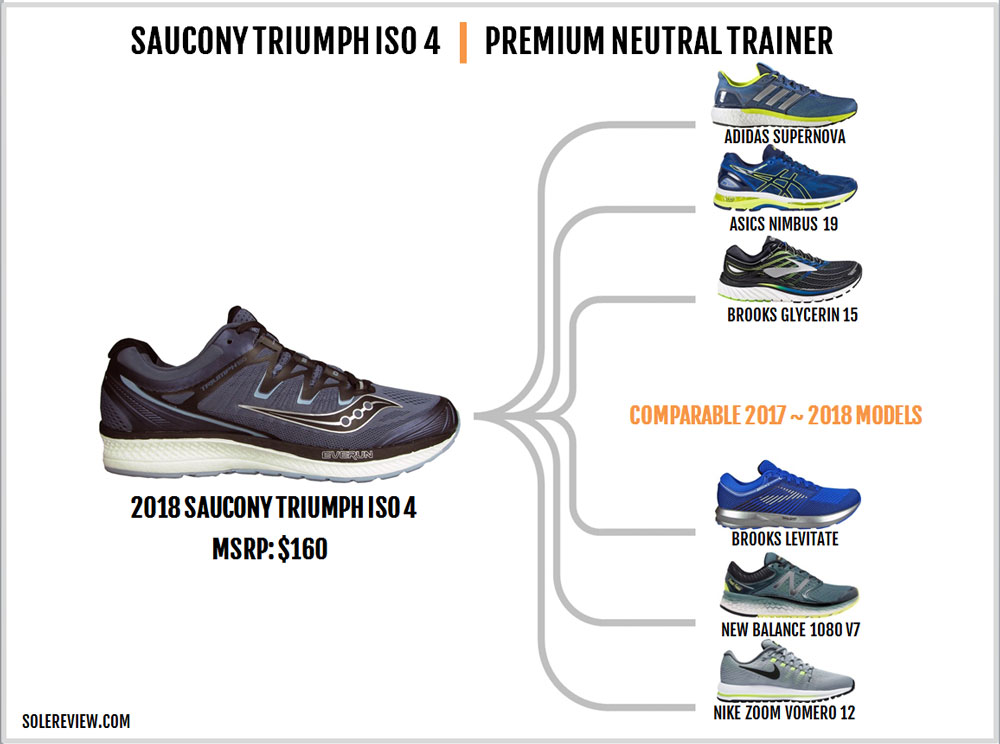INTRODUCTION
The ride quality is, without doubt, a major ingredient of a good running shoe. Most people buy a shoe based on how it feels under the foot.
This is a sound selection process; after all, you need a cushioned and supportive ride to make all those miles comfortable. And if a shoe is responsive in a springy kind of a way, even better.
However, the upper fit is equally important. A well-rounded interior fit lets you forget the shoe and focus on the run. On the other hand, even minor imperfections turn into distractions over longer runs.
You’d have noticed that the Saucony Triumph ISO 4 receives a lower score than the ISO 3. That’s certainly not due to the ride quality.
In fact, we find the ISO 4’s ride to be an improvement. The V4 uses a full-length Everun midsole instead of the hybrid EVA foam+Everun set-up last year. This update makes the ride more consistent from the heel to toe.
Though the midsole is firmer than the ISO 3, it has plenty of high quality cushioning. Besides, we’re not huge fans of overly soft shoes. (related read: Best running shoes for heavy runners)
The high-volume Everun midsole helps the Triumph ISO 4 live up to its reputation as a daily trainer and a long mileage hauler for the occasional marathon. The firmer ride gives the ISO 4 a more performance-oriented character than the ISO 3.
On the other hand, the Triumph ISO 4’s upper fit is a mixed bag. While there’s nothing wrong with the upper per se, the different parts do not come together in a cohesive fashion. The fit is a bit long but the forefoot/midfoot is snug. The heel is plush and soft, but the grip level lacks confidence.
Of course, many of the things we’ll cover in this review are highly subjective. Individual experiences will differ from solereview’s personal opinion.
DESIGN AND MATERIALS
The outer upper is built using a single piece of dual-layered engineered mesh. By dual-layered, we mean that a thicker external fabric is connected to the lining by a network of yarn. This gives the upper spacer mesh-like properties which makes the interiors comfortable.
The tongue is packed generously with foam and so is the heel collar. Both these areas use a soft-touch lining fabric. The ISO 4 has a gusset (not a full sleeve) which anchors the tongue on either side.
Interesting, the ‘Rundry’ callout on the heel lining is conspicuous by its absence. Saucony’s website doesn’t mention it either – perhaps the Triumph no longer features the ‘Rundry’ material?
A couple of reflective elements are included for night-time visibility. The outer heel has a thin strip placed vertically, and the front lacing loops are reflective.
There’s a hard internal counter inside the heel. The outside of the heel is reinforced with fused synthetic which also has cosmetic molding.
This time, the ISOFIT system is loosely based on the Triumph ISO 2 design. When viewed externally, there’s a lot of similarity between the ISO 2 and 4.
The midfoot uses three straps separated by v-notches along with a set of tiny lace-loops near the forefoot. The lateral/outer midfoot has molded mesh for aesthetic effect.
The ISO 4 differs from the ISO 2 in two ways. The ISO 2 had a full sleeve while the 2017 Triumph ISO 4 only has a gusset. Also, the ISOFIT straps on the 2017 model turn into loops at the top instead of punched-in eyelets.
Since the ISO 4’s tongue is stitched to the upper as a separate component, there’s excess material under the forefoot. If you pass your fingers underneath, you can feel the flap which is a part of the tongue. (see image above)
The toe-box has a bumper made of fused synthetic with molded details. It also extends over the forefoot to form a canopy over the big toe.
The additional material is what causes the ISO 4’s forefoot/midfoot to be narrower than the ISO 3. The previous Triumph had a full inner sleeve, and the tongue was directly attached to the upper in the front. This meant that there was no flappy material below the forefoot like the ISO 4.
The updated ISOFIT straps influence the fit quality, and so does the heel molding which is now wider than the ISO 3. We’ll cover this in detail during the upper fit breakout.
Speaking of the midsole, there’s some good news and bad news. Let’s get the good news out of the way first. The Triumph ISO 4’s midsole is now made entirely of the responsive Everun material.
There’s even an Everun Topsole below the EVA foam midsole. The insole is thinner than before, and the same as the one used in the Liberty ISO.
The bad news is that the Triumph ISO 4’s price goes up by $10 to $160. The second bad news is subjective. Switching to full Everun alters the shoe’s personality, giving it a more business-like demeanor. The ride is firmer and feels less plush than the previous Triumph editions.
Underneath the midsole is an outsole which is nearly 100% soft blown rubber. Except for the toe-tip and the heel edge, the outsole is manufactured using a soft rubber compound.
The new outsole design also eliminates sideways flex grooves under the forefoot. This makes the shoe slightly harder to bend.
DURABILITY ASSESSMENT
If you’ve ever experienced a gradual flattening of the EVA midsole on the earlier Triumph’s, rest easy now. The Everun midsole is near-indestructible and will outlast the rest of the shoe. However, the painted midsole rim (a cosmetic effect) will flake after a couple of hundred miles.
The only place where the midsole is going to see wear and tear is within the exposed groove under the rearfoot. This is where the hard rubber crash pad meets the rest of the blown rubber outsole. Repeated foot-strikes will superficially scuff the Everun foam in this small area.
This reminds us of the earlier designs of the adidas Glide Boost which had an exposed section of Boost under the heel.
We initially perceived the soft blown rubber to be less durable, but that isn’t so. The outsole flexes inwards along with the Everun midsole, and this action minimizes the extent of wear and tear.
UPPER FIT AND FEEL
The Triumph ISO 4’s fit is a bit odd. The shoe is long in size; there’s extra room of around 1/3rd of a size in the front. This in stark contrast with the forefoot/midfoot fit which hugs the foot tightly.
Besides all the extra material which makes the fit narrow, the lacing plays a part as well. The lacing inches closer towards the forefoot than the ISO 3. There’s a lacing loop over the forefoot which reduces the amount of open forefoot mesh area.
Also, with the inner sleeve reduced to a gusset, the lacing loops have a higher degree of autonomy as they operate independently of the upper.
This means that the ISO 4 cinches smoother and faster, and this can quickly make the fit quality go from relaxed to super-snug. This is a double-edged sword, so getting the lacing pressure right on the new Triumph is an acquired dark art.
If you feel that the midfoot is super narrow, ease up the lacing pressure on the first row. Then gradually work your way up to the rear till the fit pressure feels right.
However, there’s no escaping the feeling of the excess material inside the upper. As pointed out earlier, the far end of the tongue sticks out under the forefoot, resulting in an unnecessary layer of mesh.
There is no interior discomfort of any kind, it is just that the upper design doesn’t feel cohesive and it takes an effort to get the fit right. The Triumph ISO 3, on the other hand, had a better sorted upper fit.
The clue to the longer sizing lies in the heel area. This year, the internal heel counter is molded wider than the ISO 3. This splays the collar in a wider fashion and makes the heel feel less secure. It also moves the foot’s position rearwards, thus creating room in the toe-box.
The second reason is the ISO 4’s split collar design. The ISO 3 used a single lining for its collar. The ISO 4 uses two separate lining fabrics joined by a turned seam. The seam allows a higher level of play or expansion, hence reducing the hold around the ankle.
As a result, the heel grip doesn’t inspire confidence. While there is no actual slippage, the heel feels like it is slipping. For most of us, that’s bad enough.
You will want to know – considering the longness of the ISO4, is buying a half size smaller a good idea? We recommend that you stick true to size or the same size as the ISO 3. Because if you get a half size smaller, the forefoot/midfoot fit will fit narrower. You don’t want that.
An optional 2E (wide) fit for the Triumph ISO 4 is also available.
RIDE QUALITY AND BEHAVIOR
You should know that the Saucony Everun material is much firmer (around 30%) than the adidas Boost. So despite the visual similarity, the ride quality is different.
The Triumph ISO’s full-length Everun configuration packs plenty of cushioning of a non-mushy kind. There’s a tinge of firmness which prevents the midsole from bottoming out. This firmness also makes the shoe fairly supportive by minimizing sideways bias.
In the redesign process, the new ISO 4 loses the cushioning softness of the earlier ISO models. On the other hand, if you’re rotating along with a Freedom or Liberty ISO, then you’ll find the Triumph more cushioned.
Up till the ISO 3, the midsole was constructed using a combination of EVA foam and Everun inserts. So most of the hard lifting was done by the softer EVA foam while the Everun provided a certain degree of responsiveness.
With the midsole design changing into 100% Everun, cushioning plushness is traded for responsiveness. The ISO 4 has a snappy, spring-back quality in its ride which is consistent from the heel to toe.
While runners might bemoan the loss in cushioning softness, we must remember that the earlier, non-ISO Saucony Triumph models had a firm ride. The 2013 Saucony Triumph 9 is a good example. Back then, the Powergrid based midsole delivered a firm and efficient ride.
So in a way, the Triumph ISO 4 is going back to its roots. Even so, the ride isn’t as firm as the Triumph 9 or 10. The ISO 4 is in a sweet spot between firm and soft, and in our eyes, that’s a good place to be in. The ISO weighs nearly 11 ounces, but you don’t feel it – the bulk is well distributed across the upper and the midsole.
Transitions are smooth due to the outsole which covers the entire midfoot without any gap. Forefoot push-offs require some effort due to the relatively rigid midsole. Unlike the previous ISO’s, the new outsole does not have the side-to-side forefoot grooves. As a result, it’s harder to flex the shoe.
A rigid forefoot by itself isn’t an impediment. For example, if the forefoot was more rigid, it could have made transitions quicker. Or if the outsole was made of a hard rubber like the earlier adidas Glide Boost.
In the Triumph ISO 4’s case, the near entirety of the outsole is made of a soft blown rubber. This increases ride comfort, but at the cost of speed. The Triumph is best used for leisurely training runs and long-distance road races like a marathon.
PROS AND CONS
The purchase of a running shoe is an extremely personal choice, so take our list of the positives and negatives with a huge block of salt. With that out of the way, we’ll highlight what we like about the new Triumph.
The switch to a 100% Everun midsole favors the ride character. Apart from the increased durability, it makes the ride quality consistent, cushioned, and very responsive. Everun has a firm-ish nature, so the ride is supportive too.
The ISO 4’s upper is where all the Gremlins live. The long yet narrow upper fit feels off, and the heel grip doesn’t feel all that great either.
SUMMARY, AND CHANGES BETWEEN THE TRIUMPH ISO 3 AND TRIUMPH ISO 4
The Saucony Triumph ISO 4 is a daily-duty cushioned trainer with a responsive and consistent ride. It isn’t its older plusher self; and yet, you aren’t short on cushioning. The denser Everun midsole and Topsole packs plenty of impact protection and durable cushioning.
Do note that the new Triumph isn’t as soft as the ISO 3, so runners who’re expecting a plush ride will be disappointed.
There’s scope for improvement as far as the upper fit is concerned. The ISO 4’s fit is long but narrow, and the heel doesn’t feel as secure as it should. So while the ride quality has improved over the ISO 4, the same thing can’t be said of the upper fit.
The ISO 4 also goes up $10 in retail price along with an half-ounce increase in weight compared to the previous generation model.
If you’re on the fence deciding whether to upgrade from the ISO 3 to the ISO 4, then here’s a quick summary:
The redesigned Triumph trades cushioning softness for greater responsiveness and introduces a tighter fitting upper. If both these traits appeal to you, then the ISO 4 is worth switching to.
LOWER PRICED ALTERNATIVE
The Saucony Ride 10 is a popular neutral running shoe which can be had for $40 less. It features an uncomplicated EVA foam based midsole with an Everun topsole.
It is much lighter than the Triumph too. So if you’re looking for a cushioned neutral to do your faster runs in, then the Ride 10 is worth considering.
RECOMMENDED ROTATION
The Saucony Breakthru has matured gracefully over the last three years. The third iteration is in a sweet spot between a cushioned daily trainer and a road-racer. Its firm and lightweight ride quality complements the Triumph ISO 4 perfectly as a shoe for faster runs.
If you do not want the Breakthru, the Flytefoam-based Asics Dynaflyte is another great in-between for fast workouts.
On the road-racing side of things, you can either try the Saucony Type A8 or the New Balance 1400V5. Both are excellent racers with a higher level of cushioning than purist racing flats.
SIMILAR PREMIUM NEUTRAL CUSHIONED SHOES
The Saucony Triumph ISO 4 is a member of the premium neutral cushioning club. This group has shoes such as the Asics Nimbus 19 with its medium-soft Flytefoam midsole and the plush yet supportive Brooks Glycerin 15.
New Balance has the 1080 V7 which is based on the Fresh Foam platform. Nike’s Vomero 12 is a responsive and cushioned neutral trainer with a smooth upper fit.
Adidas has the Energy Boost and the Supernova. But given the Supernova’s recent metamorphosis to a much softer shoe, it makes for a better comparison with the Triumph ISO 4. The adidas Supernova has a softer ride and a price which is $30 cheaper.
The similarly-priced Brooks Levitate deserves a mention here. This is the first Brooks shoe to feature the Polyurethane-based ‘DNA AMP’ midsole – a new material platform for the Seattle-based brand. The Levitate has a tight-fitting upper over a firm yet responsive midsole.

